Are you a dog lover but cannot have them because of pet allergies?
The good news is that some dog breeds are more suitable for allergy sufferers. These dogs are known as hypoallergenic dogs. In this article, we will talk about 30 hypoallergenic dog breeds that don’t shed. We will also talk about pet allergies, tips, and how to reduce them.
According to the Asthma and Allergy Foundation of America, there are about 50 million allergy sufferers in America. One in five of these are pet allergy sufferers. In the UK, pets are the second largest cause of allergy in the home, with 40% of asthmatic children reacting to dogs.
Contents
- 1 Why Are People Allergic to Dogs?
- 2 What is a Hypoallergenic Dog?
- 3 UK & American Kennel Club Recommendation
- 4 List of Hypoallergenic Dog Breeds
- 5 Tips for Allergy Sufferers
- 6 Tips for Reducing Pet Allergens
- 7 Summary
Why Are People Allergic to Dogs?
When someone is allergic to dogs, it means that they have an over-sensitive immune system. The job of the immune system is to fight against viruses and bacteria, and get rid of them. People with an over-sensitive immune system can react to harmless proteins found in the saliva, urine or dander (dead flakes of skin) of the dogs and cause allergic reactions. These substances, in this case, the proteins that cause allergic reactions are called allergens [1][2]. Also, dog hair or fur are not allergens but they can collect pollen, mold spores, and other outdoor allergens simply by rolling on the grass when they play outside. Also, when they shed, you get exposed to their protein covered hair or fur.
The hypoallergenic dogs produce less dander and shed less hair. So, the risk of getting an allergic reaction from hypoallergenic dogs is much lower.
What is a Hypoallergenic Dog?
A hypoallergenic dog simply refers to a dog that is less likely to cause an allergenic reaction. It does not mean that hypoallergenic dogs are totally allergy safe. Some hypoallergenic dog breeds are perfect for allergy sufferers. These dogs don’t shed much, produce fewer allergens, and thus an allergic person can tolerate them better.
UK & American Kennel Club Recommendation
Even though no dog breed or crossbreed is 100% hypoallergenic and non-shedding, certain dog breeds shed less or no hair. You would be less likely to have an allergic reaction to them.
While the UK and American Kennel Clubs do not guarantee that a person will NOT have an allergic reaction to a particular dog, certain hypoallergenic dog breeds are better for allergy sufferers.
In terms of purebreds, neither of these kennel clubs make any claims about hypoallergenic dogs or breeds. But they both recommended a list of hypoallergenic dogs.
Here is the complete list of dogs that are hypoallergenic recommended by UK and American Kennel Clubs. These are all purebred dogs.
List of Hypoallergenic Dog Breeds
Terrier Group
Bedlington Terrier

With a look similar to lambs, Bedlington terriers are one of the best dog breeds for people with allergies. In addition to being hypoallergenic, the Bedlington Terriers are small, affectionate, intelligent, and cheerful dogs.
Kerry Blue Terrier
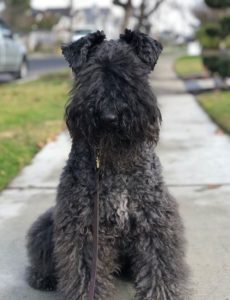
The Kerry Blue Terrier is energetic and fun-loving. The breed enjoys being part of an active family that can provide daily exercise. Their coats need regular brushing and trimming.
Soft Coated Wheaten Terrier
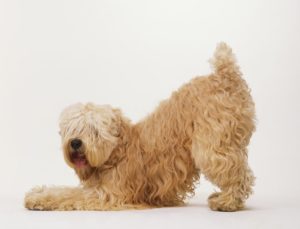
The Wheaten was bred in Ireland for over two hundred years to be an all-purpose farm dog. These dogs have strong personalities and a sense of fun. The Wheaten is a medium-sized dog with a distinctive silky, gently curling coat that gives a natural, unfussy look.
American Hairless Terrier

The American Hairless Terrier is a lively, friendly, and intelligent companion. The breed does well with children and is also suitable for city dwellers due to their minimal exercise requirements. They also need regular bathing and nail trimming.
Yorkshire Terrier
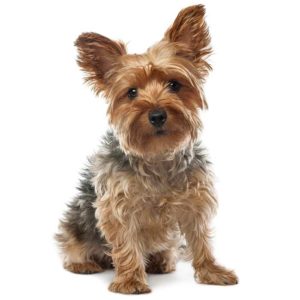
The famous Yorkshire Terrier or Yorkie is the perfect breed for allergic families that live in small flats or apartments. They barely shed any hair so that they don’t leave allergens all over your place. However, they are high maintenance dogs. You’ll have to monitor their hygiene and brush them every day to prevent their coat from getting tangled and dirty.
Tibetan Terrier
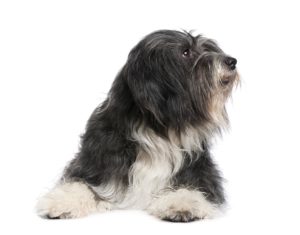
The Tibetan Terriers love being with people and are adaptable to a variety of homes and lifestyles. Their shaggy coat is attractive but requires frequent grooming.
Dandie Dinmont Terrier
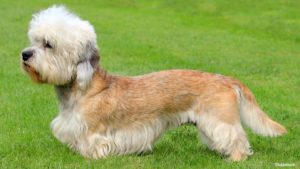
Dandie Dinmont Terriers are very playful, and loving. This breed was originally developed for hunting small games. Their coat can be a mixture of hard and soft hairs that are black to pale gray or red to fawn.
Glen of Imaal Terrier
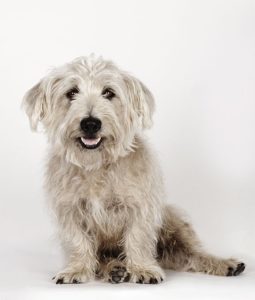
Glen of Imaal Terrier are affectionate, gentle, and loving family dogs. They have a weather-resistant double coat, consisting of a rough outer coat and a soft undercoat. You will need to brush them weekly to prevent matting and they will shed very little.
Sealyham Terrier

The Sealyham Terriers are brave and spirited, but not as spiky as smaller terriers. These sturdy, outgoing companions are recognized by their “fall,” the mass of hair covering the forehead. You will need to brush them every two or three days, as Sealy coats tend to mat easily. They don’t shed too much, but you will need to clip their coat regularly.
Black Russian Terrier

The Russian Black Terrier is a large dog with a slightly long body and very athletic built. They have soft undercoat covered by a coarse, protective outer coat. To prevent mats, you will need to brush them once or twice a week. They don’t shed much.
Border Terrier
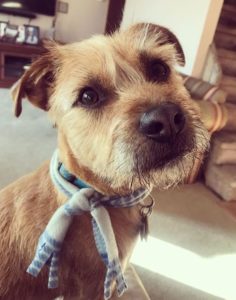
The border terriers are hunting dogs, but this intelligent and hardy breed also makes them a lively companion or family pet as well. The border terriers are affectionate, obedient, and easily trained. Their wiry coat is hypoallergenic. They shed little and require an easy weekly brushing.
Gun dog Group
Lagotto Romagnolo
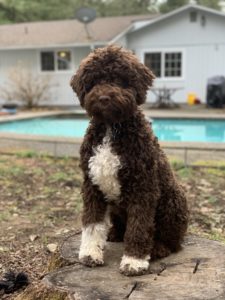
The Lagotto Romagnolo is a happy dog with tons of energy, needing plenty of activity. They are very affectionate dogs. Their thick curly coat is similar to that of a Poodle. They require trimming and regular brushing to prevent mats.
Irish Water Spaniel
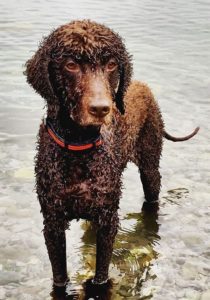
This strong, healthy, intelligent breed is the clown of the spaniel family. Irish Water Spaniels are very active and energetic, and they need daily exercise. Their waterproof double coat requires brushing every few weeks.
Spanish Water Dog
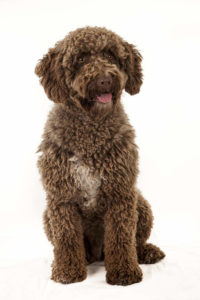
The Spanish Water Dog is a lively, hardworking dog with natural protective instincts. They are a high energy breed that does best with an active family. They require little grooming for their curly, woolly coat, but they still need to be shaved down at least once a year, .
Working Group
Bouvier des Flandres
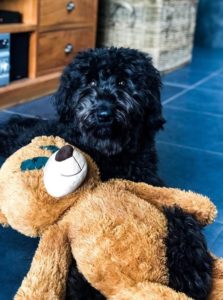
Bouvier des Flandres is a great family dog. They are very calm and have a pleasant nature. These dogs have a rough, shaggy outer coat and dense undercoat that offers protection in harsh weather. They are great for general farm work, including cattle droving, sheep herding, and cart pulling, and nowadays as guard dogs.
Giant Schnauzer
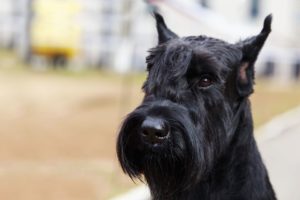
The Giant Schnauzer is intelligent and can be territorial, naturally feeling protective of its family. The breed needs a lot of exercise and loves having a job to do. They require regular grooming.
Portuguese Water Dog
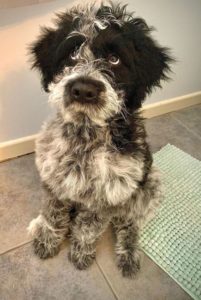
This breed is very athletic. The Portuguese Water Dog needs vigorous daily exercise and would do best with a very active family. They are intelligent and loyal workers. Their waterproof coat requires regular maintenance.
Pastoral Group
Hungarian Puli

This breed is best known for its long, corded coat resembling dreadlocks. The Puli is a hardworking herding dog and family companion. They are energetic and lively. This mop-like dog breed from Hungary appears bigger due to its distinctive coat.
Komondor
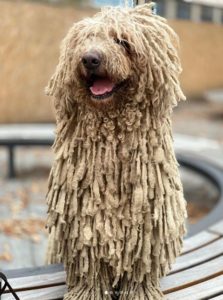
The Komondor is one of the world’s most recognizable dog breeds. These courageous, powerful, large Hungarian flock guardians are covered in profuse white cords from head to tail. Komondors are intelligent, independent, and highly protective.
Toy Group
Bichon Frise
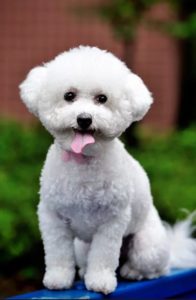
The Bichon Frise is truly a non-shedding small dog that has hair instead of fur. This playful and affectionate dog is an ideal pet for people with allergies. They are high maintenance dogs. Bichon Frise’s hair grows continuously and requires frequent grooming, brushing, and the occasional bath to keep up with their powder-puff look.
Bolognese
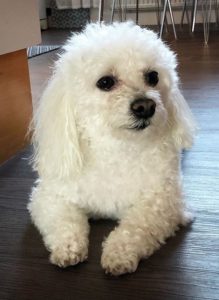
Just like Bichon Frise, the distinctive fluffy coat of Bolognese is composed of hair rather than far. The Bolognese does not shed, although you will need to brush out the dead hairs regularly. The coat requires daily grooming to keep these lovable lap dogs looking their best.
Chinese Crested
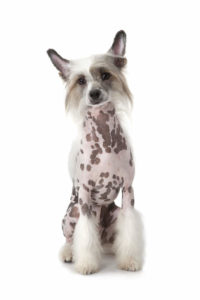
One way to avoid shedding is to select a dog breed without hair or fur. The Chinese crested comes in two coat types. Hairless and powder-puff. The hairless Chinese crested have hair on their heads, tails, and feet while the powder-puff has a coat of fine hair that sheds very minimally.
Coton de Tulear
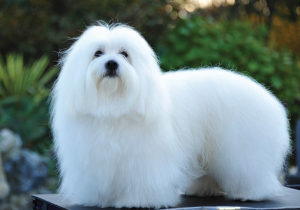
The Coton de Tulear is a small, hardy dog that is happy, eager to please, and loyal. The breed gets along well with other dogs and children. Their long coats require daily grooming.
Havanese
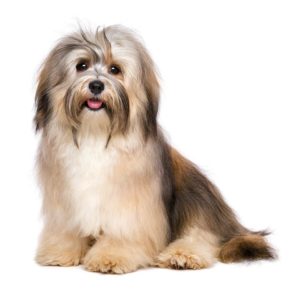
This native Cuban dog offers his owner both his spunky charm and a coat that doesn’t shed. The Havanese does well in all types of housing, from apartments to homes with large yards.
Maltese
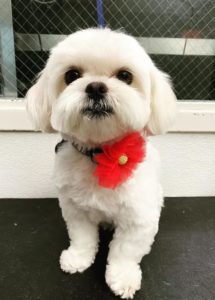
The Maltese are happy, lovely, playful, intelligent dogs. But the best thing is that they don’t lose much hair! They’re great pets for allergies sufferers. They have a single layer of fur, similar to human hair, which grows continuously and doesn’t come off.
Utility Group
Lhasa Apso

This small breed from Tibet makes an excellent companion. Calm yet playful, the Lhasa Apso enjoys brisk walks and resting in her owner’s lap. Lhasa Apso does not shed, but their coat requires maintenance. Many owners keep their Lhasa Apso Clipped to avoid daily grooming and brushing their long hair.
Miniature Schnauzer
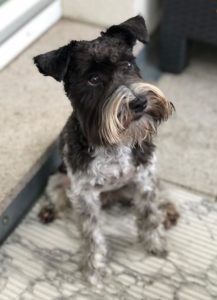
The Miniature Schnauzer is a smart, trainable, and cheerful little dog that strongly resembles his standard Schnauzer cousin. This breed sheds very little, and their adaptability makes them at home in the city or the country as long as he is around people.
Poodles (Toy, Miniature, and Standard)
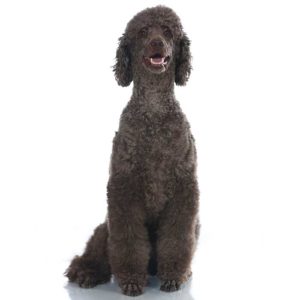
Most people think of poodle when they hear about small dogs that don’t shed. The poodle is a non-shedding and hypoallergenic dog breed. Poodles are highly intelligent and easy to train. Their hair requires regular grooming to avoid mats and tangles. The poodles are contributing parents for quite a few hypoallergenic hybrids, often called doodle dogs such as Cavappo, the Maltipoo, the Schnoodle, and the Labradoodle. Poodles come in three different sizes, such as toy, miniature, and standard.
Shih Tzu
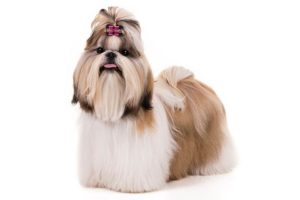
The Shih Tzus are loyal and friendly and happens to be hypoallergenic too. Shih Tzu’s coat doesn’t shed. Their hair only falls out when brushed or broken. Shih Tzus are house pets, and their gentle and trusting nature makes them an exceptional companion.
Xoloitzcuintli
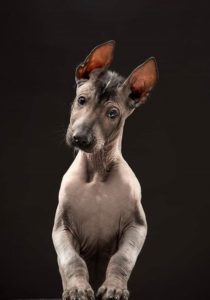
Just like any other hairless dog breeds, due to their appearance, the Xoloitzcuintlis are not a very popular dog among people. Xoloitzcuintlis are loyal, alert, intelligent, calm, and lovely. This dog breed is not only perfect for allergy sufferers, but they’re also excellent watchdogs.
Tips for Allergy Sufferers
Whatever type of dog you decide to get, spend some time with the individual beforehand to see if you have any reaction and visit more than once before adopting.
Let the puppy lick your face or touch your face with your hands after handling the pup.
Wait a couple of days after each contact session. If there is still no reaction, then you might be one of the numerous allergy sufferers who are lucky enough to share their home with Man’s best friend.
Tips for Reducing Pet Allergens
No dog breed or crossbreed is 100% non-shedding and hypoallergenic. But you can follow the tips below to reduce pet allergens that cause allergic reactions.
- Get a HEPA air cleaner in the bedroom or main living room. HEPA stands for high-efficiency particle air. It is a type of air filter that removes 99.97% of all particles.
- Use a HEPA vacuum cleaner. Neither the HEPA air nor the vacuum cleaner is cheap, but if you suffer allergies and want to share your life and home with a dog, they are worth considering. Both will dramatically improve the quality of the air you breathe in your home.
- Regardless of what vacuum you use, clean and dust your home regularly.
- Keep the dog out of your bedroom. We spend around a third of our lives here, and keeping animals out can significantly reduce allergic reactions.
- Do not allow your dog on the couch, bed, or any other furniture. Keep him out of the car, or if this is not possible, use car seat covers or a blanket on the seat.
- Brush your pet regularly. Always outdoors and regularly clean his bedding. Avoid using ordinary washing powder, as it may trigger a reaction in dogs with sensitive skin.
- Keep your dog’s skin healthy by regularly feeding a good multivitamin and fatty acid supplement, such as Fish oil.
- Consider using an allergy-reducing spray such as Allerpet, which helps to cleanse the dog’s fur hair of dander, saliva, and sebaceous gland sections. There are also products to reduce allergens from carpets, curtains, and furniture.
- Avoid contact with other dogs and always wash your hands after you have handled any dog, including your own.
- Consult your doctor. Medical advances are being made in the treatment of allergies, and a range of tablets, sprays, and injections are currently available.
Summary
Just because you are diagnosed with a pet allergy doesn’t mean that you can’t have or be around dogs. Knowledge is power and understanding as much as we can about our allergies is the first step to getting over them.
Leave a Reply